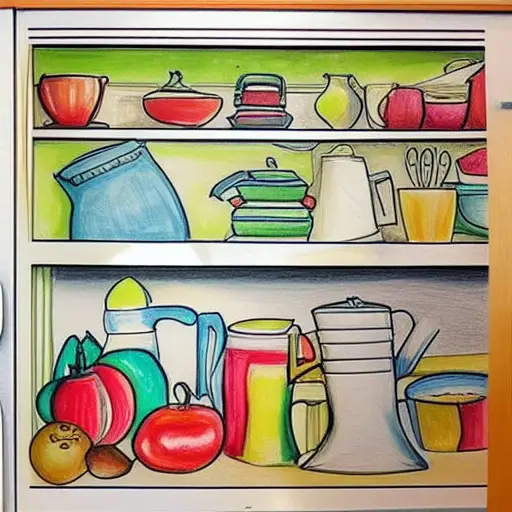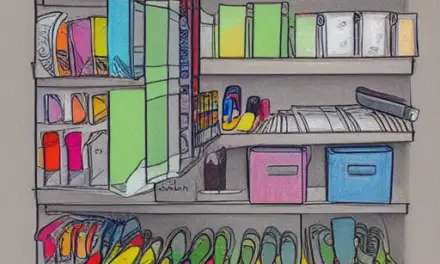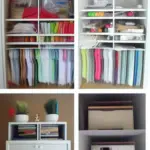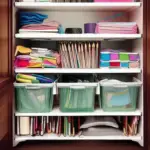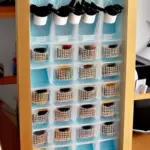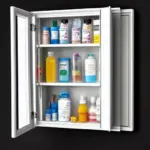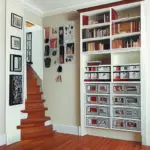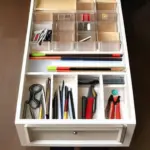Creating a kitchen organization system is not that hard as long as you know the right steps. Start by cleaning up and donating items that you do not use regularly. Then, organize food storage containers and cabinets by zones. If your kitchen is small, consider moving items that you do not use often to free up cabinet space.
Discard items you don’t use often
When organizing the kitchen, it is important to discard items that you don’t use very often. Discarding items is an excellent way to free up storage space and reduce clutter. Once you’ve cleared out the cabinets and drawers, you can start placing items back inside. To help with this task, you may want to set up folding tables and separate the items into categories. You can then discard broken or damaged items, create a giveaway pile, and reorganize the rest of the kitchen.
Next, organize the kitchen cabinet shelves. Kitchen cabinets usually contain a lot of items that you use regularly and others that you rarely use. Those items can be donated or recycled instead of taking up valuable kitchen space. It is also a good idea to discard expired pantry items that are no longer useful.
Organizing the kitchen cabinets is not an easy task. If you have a small space, you may not be able to organize the cabinet shelves. Thankfully, there are several easy steps to make it easier to organize the kitchen. Start by cleaning out all the drawers and cabinets. If you have a large drawer, you may want to organize it by categories. For instance, you can place dishes in one drawer while cleaning out the other.
Before you get started with organizing the kitchen, you must accept the fact that you’re going to have to get rid of items you don’t use very often. You may have dozens of coffee mugs, dozens of condiments and stale spices, overflowing junk drawers, and too many cleaning supplies. It is important to remember that a kitchen is the heart of the home and should be a place where everyone spends time.
Organize by zones
One of the best ways to organize your kitchen is to set up different zones. Zones will group similar items together, based on where you typically use them. Sometimes it will be necessary to reorganize storage, but this is the most functional method of kitchen organization. The first step in organizing by zone is to decide where you need items stored and how you want the kitchen to function.
When you are organizing the kitchen by zone, you can also use post-it notes to help you remember what you need. For instance, a post-it note might remind you to put away clean dishes. Another tip is to stick to your zones and remove the post-its as you learn them. It is a good idea to check each zone once a month to ensure that they are still in order.
To organize the kitchen, make sure that each zone is easy to access. For instance, a cooking zone should have cabinets for cleaning products, kitchen towels, and a general waste bin. A prep area should have cabinets for chopping boards, a knife block, and a food waste bin.
A storage zone can be located near the refrigerator and not in the main working zone. A specialty zone can contain storage for serving utensils, pots, and pans. Then, there’s the beverage area, usually including a small refrigerator and other appliances necessary for beverages. In addition, there may be a breakfast nook or a small space near the kitchen where you can grab a quick breakfast. These areas may also have storage and counter space.
Organize food storage containers
There are a number of ways to organise food storage containers in the kitchen. Nesting your Tupperware containers can help you save space in the cupboards. Nesting your containers will also save space when they’re empty. To create an organised system, make sure that all lids and containers match each other.
If you have a large number of small containers, organizing them can be difficult. You may find that it’s overwhelming, especially if you don’t organize regularly. However, this is not a problem if you follow some simple rules. First of all, use a P-Touch label maker to label the containers so that you know where they are stored.
Another way to organize your food storage containers is to place them in a drawer or cabinet. Ideally, the cabinet should have ample room to fit the containers. Don’t overcrowd your cabinet or drawer; it will look disorganized. Secondly, consider allowing enough space for the containers to sit upright.
You can also designate specific spots for each category. As an example, if your children like to eat cereal, they should go to one specific area and put it back in the correct location. Another option is to label the containers by size, type and color.
Organize cabinets
One of the best ways to maximize cabinet space is to create zones. For example, the highest cabinets should be designated for items that rarely get used. This way, you won’t have to climb up the cabinet to find what you need. You can also use wire racks to create more shelves.
Organizing cabinets in the kitchen is not easy if you don’t know where to start. You may end up wasting time organizing items in overcrowded areas. The first step is to clear away clutter. You can do this by editing out items that are no longer needed and those that have expired. Organizing cabinets can take anywhere from a few hours to a whole day, so make sure to make enough time to finish the task.
The next step is to determine which items are best kept in which cabinet. For example, items for children should be stored at a high shelf where they won’t accidentally knock them over. Also, store cleaning supplies in high shelves and not below the sink. Also, it is helpful to store dry goods in separate containers.
Another step is to label the containers, storage bins, and cabinet doors. This will help you find what you need easily. You can even label your food labels and stack dinnerware according to the type. Keeping your kitchen organized is a good way to maximize the space you have in the cabinets.
Organize shelves
The best way to organize kitchen shelves is to sort items by category and designate specific storage areas for each type. For example, storage for favorite snacks should be located in an area that is easy to reach for the entire family. Another area should be designated for breakfast items. You can also add printed labels to your containers to make sure that everything has a proper place. Another useful tip is to use baskets to corral loose items. Also, drawer inserts are helpful to prevent items from rattling around. Lastly, small containers can be placed between the drawer dividers to help keep everything in their proper place.
You can also use shelf liners to protect your kitchen cabinet shelves. These are available in many patterns and colors, and can help brighten up the space in the kitchen. You can use adhesive or non-adhesive liners. Using shelf liners will help keep your shelves clean and bright.
In addition to separating your items by category, you can also use open shelving to display decorative items. For example, you can place glass and wooden bowls on different sections of the open shelves. Adding a little variety to your open shelving will make it look neater and easier to access.
Organize drawers
Kitchen drawers are a common source of clutter. When you have too many things in the drawer, it can be a real pain to get to what you need. To organize them, you should take everything out, remove duplicates and place items back by category. This will make it easier to open the drawers and find what you need faster. Also, the drawers will look more organized.
Organizing your kitchen drawers can improve your daily life by saving you time and sanity. Creating a well-organized drawer is not difficult and doesn’t take a lot of time. But make sure you consider the type of drawer you have and what you need to store in it. Once you’ve done that, you can purchase drawer organizers to keep everything in its place.
Alternatively, you can purchase 1/4″ thick hobby boards and glue them to the inside of your drawers. You can use wood glue or Loctite glue to adhere the craft board to the inside of the drawer. This is useful if you have odd-shaped utensils.
You can also organize your kitchen cabinets by getting rid of items you rarely use. Cabinets are a traditional way of storing items, but many things actually fit better in drawers. So before you start organizing your cabinets, you should take an inventory of all the things in them. Organize them by type and place them near where you use them. You can also eliminate old or broken items. Emptying your kitchen cabinets will also give you a chance to assess how much space they offer, as well as any expired or broken food items.

